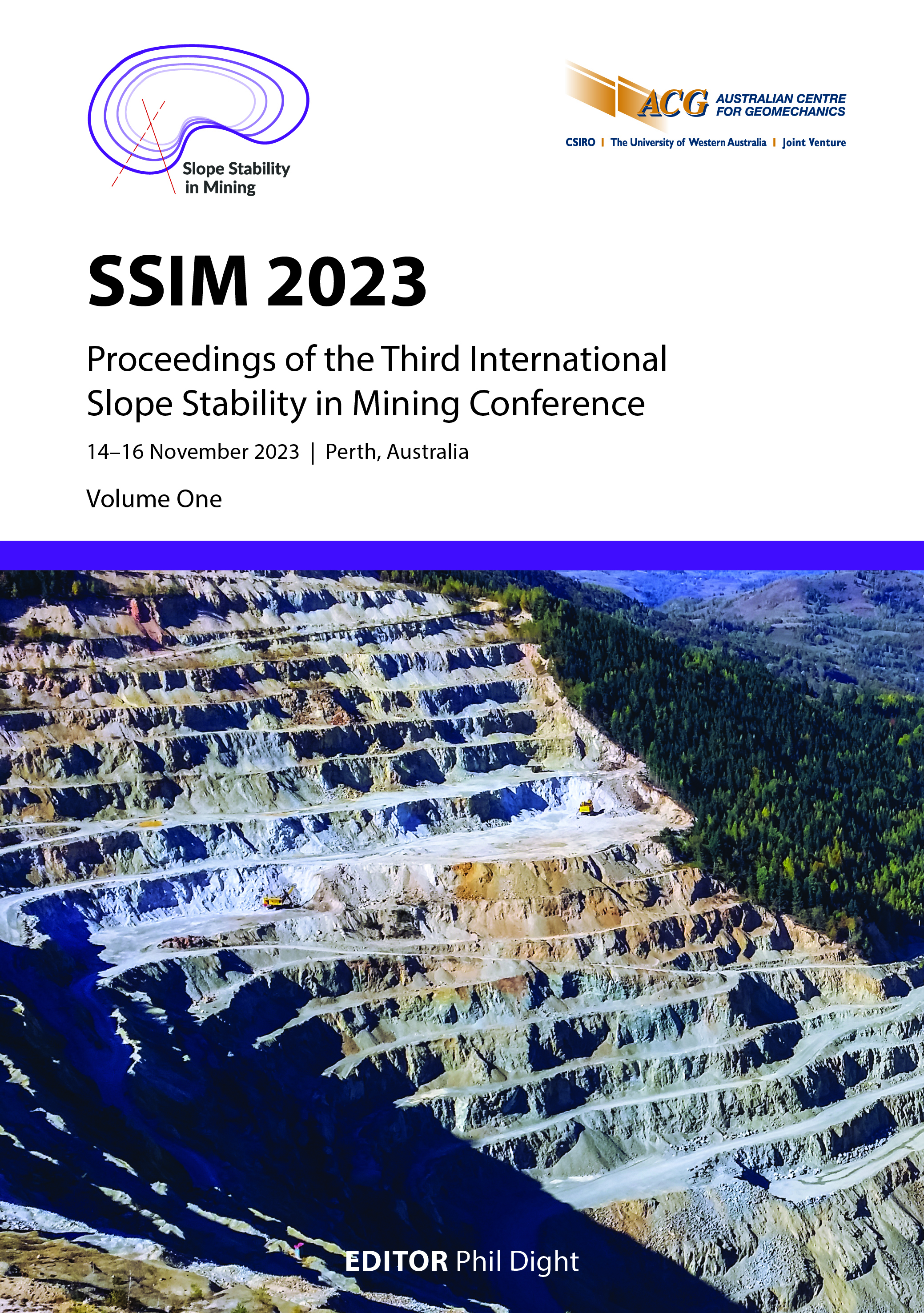Observing the anatomy of slope failure using time-lapse seismic velocity changes

|
Authors: Taylor, G; de Wit, T |
DOI https://doi.org/10.36487/ACG_repo/2335_50
Cite As:
Taylor, G & de Wit, T 2023, 'Observing the anatomy of slope failure using time-lapse seismic velocity changes', in PM Dight (ed.), SSIM 2023: Third International Slope Stability in Mining Conference, Australian Centre for Geomechanics, Perth, pp. 733-740, https://doi.org/10.36487/ACG_repo/2335_50
Abstract:
The seismic velocity of an Earth material is a key physical characteristic that can provide critical information such as composition, porosity, and overall cohesion of said material. Although such physical properties are typically assumed to be static in time for any given rock mass, it has been observed that the seismic velocity of natural materials can vary with time in response to a variety of processes, which can include environmental, anthropogenic, or tectonic effects. Such processes may include stress-induced slip events or changes in pore fluid pressure. The temporal changes in seismic velocity that result from these effects are typically extremely small (<1%), and are therefore difficult to observe reliably. The best approach to observing temporal seismic velocity variations within a medium does not involve the measurement of travel time delays in direct waves from ballistic seismic events, but instead focuses on multiple scattered waves contained within the ambient seismic noise field. We present a novel experiment in which continuous recordings of ambient seismic noise made within the open pit wall of the Century Mine in Australia are used to track variations in seismic velocity during a period of substantial failure in the stability of the pit wall. We observe a decrease in the bulk seismic velocity of 0.5% during the course of the failure, with the onset of this decrease occurring approximately two weeks prior to the initiation of major surface deformation. The precursory decrease in seismic velocity begins following a nearby mining blast and precedes the onset of other geophysical signals that herald the slope failure, including conventional seismic monitoring, and geodetic observations. We propose that the routine monitoring of seismic velocity variations may be provide critical information, including early warning, in the management of landslide hazards.
Keywords: slope monitoring and its interpretation, slope stability in weak rocks and rock dumps, case studies
References:
Bensen, GD, Ritzwoller, MH, Barmin, MP, Levshin, AL, Lin, F, Moschetti, MP,... Yang, Y 2007, ‘Processing seismic ambient noise data to obtain reliable broad-band surface wave dispersion measurements’, Geophysical Journal International, vol. 169, pp. 1239–1260,
Brenguier, F, Campillo, M, Hadziioannou, C, Shapiro, NM, Nadeau, RM & Larose, E 2008, ‘Postseismic relaxation along the San Andreas Fault at Parkfield from continuous seismological observations’, Science, vol. 321, pp. 1478–1481,
/10.1126/science.1160943
Clarke, D, Zaccarelli, L, Shapiro, NM & Brenguier, F 2011, ‘Assessment of resolution and accuracy of the moving window cross spectral technique for monitoring crustal temporal variations using ambient seismic noise’, Geophysical Journal International, vol. 186, pp. 867–882,
Le Breton, M, Bontemps, N, Guillemot, A, Baillet, L & Larose, E 2021, ‘Landslide monitoring using seismic ambient noise correlation: challenges and applications’, Earth-Science Reviews, vol. 216,
Luo, X, Salvoni, P, Dight, P & Duan, J 2018, ‘Microseismic events for slope stability analysis - a case study at an open pit mine’, Journal of the Southern African Institute of Mining and Metallurgy, vol. 118, pp. 205–210,
Obermann, A, Planes, T, Larose, E, Sens-Schonfelder, C & Campillo, M 2013, ‘Depth sensitivity of seismic coda waves to velocity perturbations in an elastic heterogeneous medium’, Geophysical Journal International, vol. 194, pp. 372–382,
Paaschens, J. C. J. 1997, ‘Solution of the time-dependent Boltzmann equation’, Physical Review E, vol.56, pp. 1135–1141,
Pacheco, C & Snieder, R 2006, ‘Time-lapse travel time change of multiply scattered acoustic waves’, Geophysical Journal International, vol. 165, pp. 485–500,
Salvoni, M & Dight, PM 2016, ‘Rock damage assessment in a large unstable slope from microseismic monitoring - MMG Century mine (Queensland, Australia) case study’, Engineering Geology, vol. 210, pp. 45–56,
/j.enggeo.2016.06.002
Snieder, R, Sens-Schonfelder, C & Wu, R 2017, ‘The time dependence of rock healing as a universal relaxation process, a tutorial’, Geophysical Journal International, vol. 208, pp. 1–9,
Taylor, G & Hillers, G 2019, ‘Estimating temporal changes in seismic velocity using a Markov chain Monte Carlo approach’, Geophysical Journal International, vol. 220, pp. 1791–1803,
© Copyright 2025, Australian Centre for Geomechanics (ACG), The University of Western Australia. All rights reserved.
View copyright/legal information
Please direct any queries or error reports to repository-acg@uwa.edu.au
View copyright/legal information
Please direct any queries or error reports to repository-acg@uwa.edu.au

